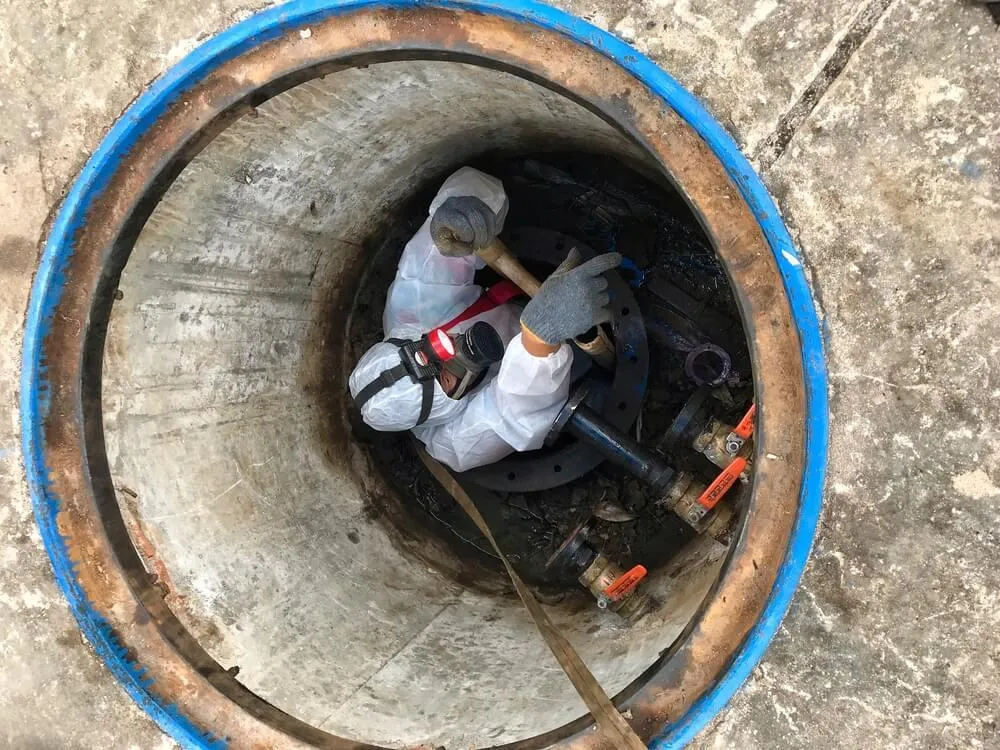
5 steps workers should learn to take in confined space rescue training
Working within confined spaces can be extremely dangerous. Accidents during confined space work can often lead to serious injury and even death. OSHA reported 17 instances of confined space accidents in 2021 in the United States. Out of those 17 accidents, 100% of them resulted in the death of a worker or other personnel.
A well-trained and well-prepared confined space rescue team is vital to preventing fatal accidents. In the event of an accident, not all rescue services or emergency responders are trained to conduct confined space rescues. This is why OSHA strongly recommends that employers have trained rescue personnel on-site during confined space work.
What do my workers need to learn during confined space rescue training?
In the event that first responders are unable to arrive quickly or are unprepared to assist with a confined space rescue, it will be up to well-trained personnel to prevent worker injury or death. Here are five steps that your workers should learn to take during confined space rescue training:
Preplanning — Rescue workers need to become familiar with the confined space in which they will be working. This includes all entrances and exits, as well as any hazards that might be present in the space. This will help them be prepared to move quickly in the event of an accident.
Knowing first responder contacts — Your confined space rescue team needs to be able to contact first responders right away in the event of an accident or injury. This includes fire as well as emergency medical responders. Knowing exactly who to call, and how long it may take them to arrive, is vital to preventing worker fatalities.
Using air breathing systems — Knowledge of air breathing systems is important for working within a confined space. Workers may have little access to breathable air in a confined space. Workers who become trapped will have only a short time before suffering injury due to a lack of breathable air, so your rescue team needs to be educated on how to quickly use breathable air systems in a confined space.
Using personal protective equipment — Personal protective equipment can include hazmat suits, filtration masks, and head and hand protection. Rescue teams need to be able to easily identify and use all forms of personal protective equipment.
Employing rope systems — When entering a confined space, rescuers will often need to use a rope and pulley system with personal harnesses to reach workers. Knowledge of how to quickly and properly use these rope systems can help to save a worker’s life.
Where can I turn for confined space rescue training?
Basin Safety’s Confined Space Rescue program helps your personnel prepare for the rescue and recovery of victims trapped in a confined space. This eight-hour training program covers all the vital steps listed above and is compliant with all OSHA and local regulations.
Contact Basin Safety today for more information on how our many workplace safety and training programs can help to protect your workforce.
Archives
Categories
Benzene Testing
Bloodborne Pathogens
Breathing Air Systems
Certification Process
Confined Space Attendants
Confined Spaces
Construction Equipment Operators
Electrical
Environmental Compliance
Excavation and Trenching
Fire Extinguisher Training
Forklift Operator
Hazcom Workplace Safety
HAZWOPER
Hearing Protection Training
Heavy Equipment
Hydrogen Sulfide
Lone Worker
Lone Worker Solutions App
Monitoring
Oil and Gas
Oil Drilling
Online Training Confined Spaces
Permit-required
PPE
Radiation Safety
Rescue Equipment
Rescue Team
Safety Consultants
Safety Devices
Safety Tracking
Safety Training
Site Inspections
Training 1
Training 2
Training 3
Training 4
Training 5
Uncategorized
Virtual Access to Safety Data
Waste Haulers
Confined Space Rescue
Mental Health
VISIT US
202 48th Ave SW, Williston, ND 58801
2740 Sims St. Suite B Dickinson, ND 58601
(701) 572-8140

BASIN SAFETY CONSULTING CORPORATION
Basin Safety believes in shared excellence. We are accountable to our core values:
● Pioneering Excellence Everyday
● Supporting each other to put customers first
● Asking the right questions, to ensure the greatest results.
Basin Safety Consulting © 2025. All rights reserved.
Powered By Upleveled Strategies

BASIN SAFETY CONSULTING CORPORATION
Basin Safety believes in shared excellence. We are accountable to our core values:
● Pioneering Excellence Everyday
● Supporting each other to put customers first
● Asking the right questions, to ensure the greatest results.
VISIT US
202 48th Ave SW, Williston, ND 58801
2740 Sims St. Suite B Dickinson, ND 58601
(701) 572-8140
Basin Safety Consulting © 2025. All rights reserved.
Powered By Upleveled Strategies
